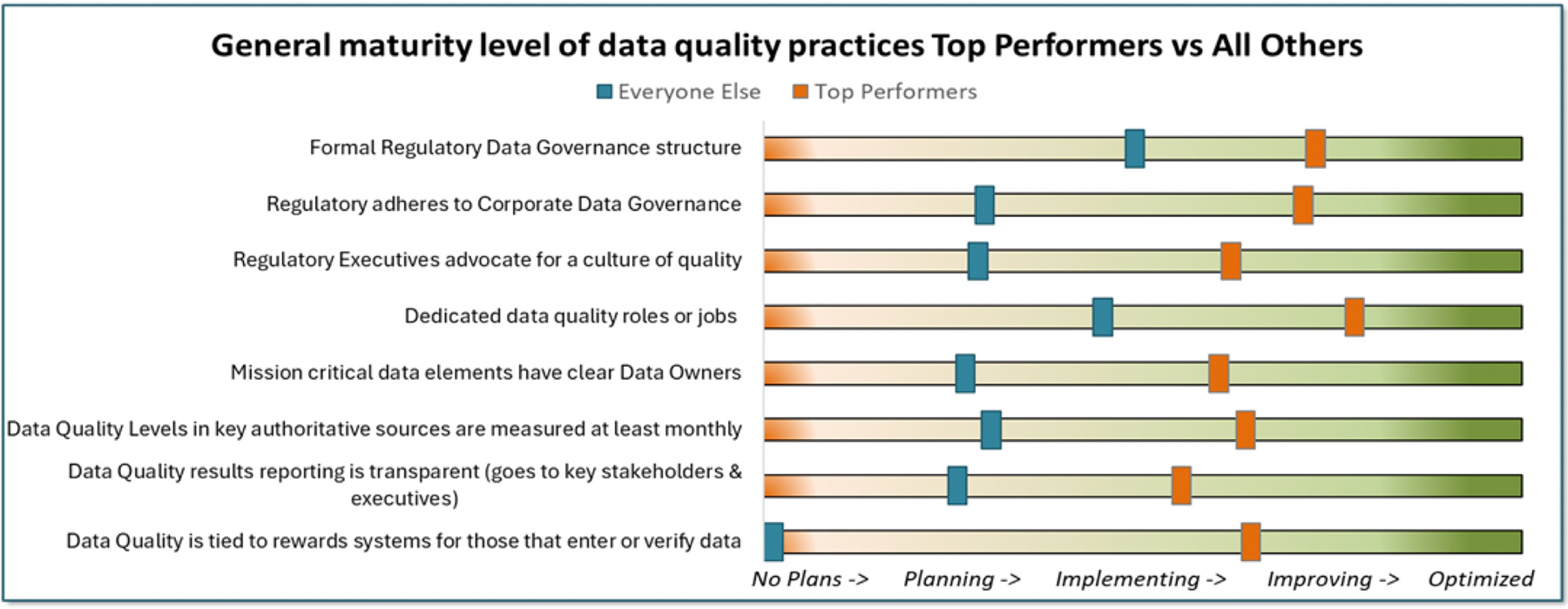Extra! Extra! Read All About the 2024 WCRIM Study (and listen to our Podcasts)
By Katherine Yang-Iott
The 2024 WCRIM Study – Extending the Power of RIM reveals a jump across all performance measurements in our industry standard benchmark since 2022. The data from the current cycle of our research illuminates a clear path to achieving high performance and the degree of performance improvement is driven by consistently applying strong organizational practices, process maturity, and building up data governance.
Key performance contributors include adoption of metrics-driven continuous improvement programs, reducing system and process complexity, adopting formal data governance practices to increase data quality, simplifying local affiliate interactions, integration of business processes and effective information exchange cross-functionally. The data (see Figure 1) shows the increase in overall RIM capability efficiency (63% vs. 56% in 2022), more effective metrics programs (55% vs. 37% in 2022), high confidence in data quality (47% vs. 38% in 2022), Real Time data reporting (53% vs. 43% in 2022) and more affiliate use of global systems (70% vs. 57% in 2022) for the 63 participating companies. We also see a significant increase in the value of metrics programs with more companies having abilities to identify compliance risk, productivity opportunities and better decision-making.
Figure 1 – World Class RIM Performance Trending
What we learned is that organizational strategies are paying off. Data shows direct correlation of top performance scores and use of key organizational strategies and practices, including the investment to formalize and mature data governance programs, metrics driven continuous improvement programs, and cultural norms such as experimentation and collaboration effectiveness. You can hear more on what Steve Gens and I think about key organizational practices that that make a difference and listen to Kelly Hnat and Preeya Beczek’s insights on how to best apply governance practices for data quality sustainability.
Figure 2 depicts the key data quality practices that we track with the clear separation of top performers (orange) who are optimizing these practices with everyone else (teal) who are just in the initial design stage of their programs. We also learned there is no correlation of RIM data entry models (central, decentralize, hybrid) to data quality levels; it’s all about data governance practices period!
Figure 2 – Data Quality Practice Comparison
Advanced Technology continues to show promise; however, the story remains unchanged – advanced technology projects are complex and often take longer than planned. Part of the learning is to explore how to incorporate regulatory technology projects as part of the broader R&D and enterprise digital strategy. Take a listen to our podcast about Advanced Technologies and Digital Strategies with Greg Brolund as we share some specifics of what we learned in this section.
With as much progress as we’re seeing, there are still several complex challenges slowing down the next stage of value, which includes optimizing global affiliate networks, working on defining data ownership, and end user accountability. Adoption of data standards also continues to be a core challenge, in part due to uncertainty and a slower pace of change at the Health Authorities.
There’s much to be learned from the latest World Class RIM Survey. If you are interested in having a private debrief on the full report, contact us. We will be publishing the white paper in early fall.








